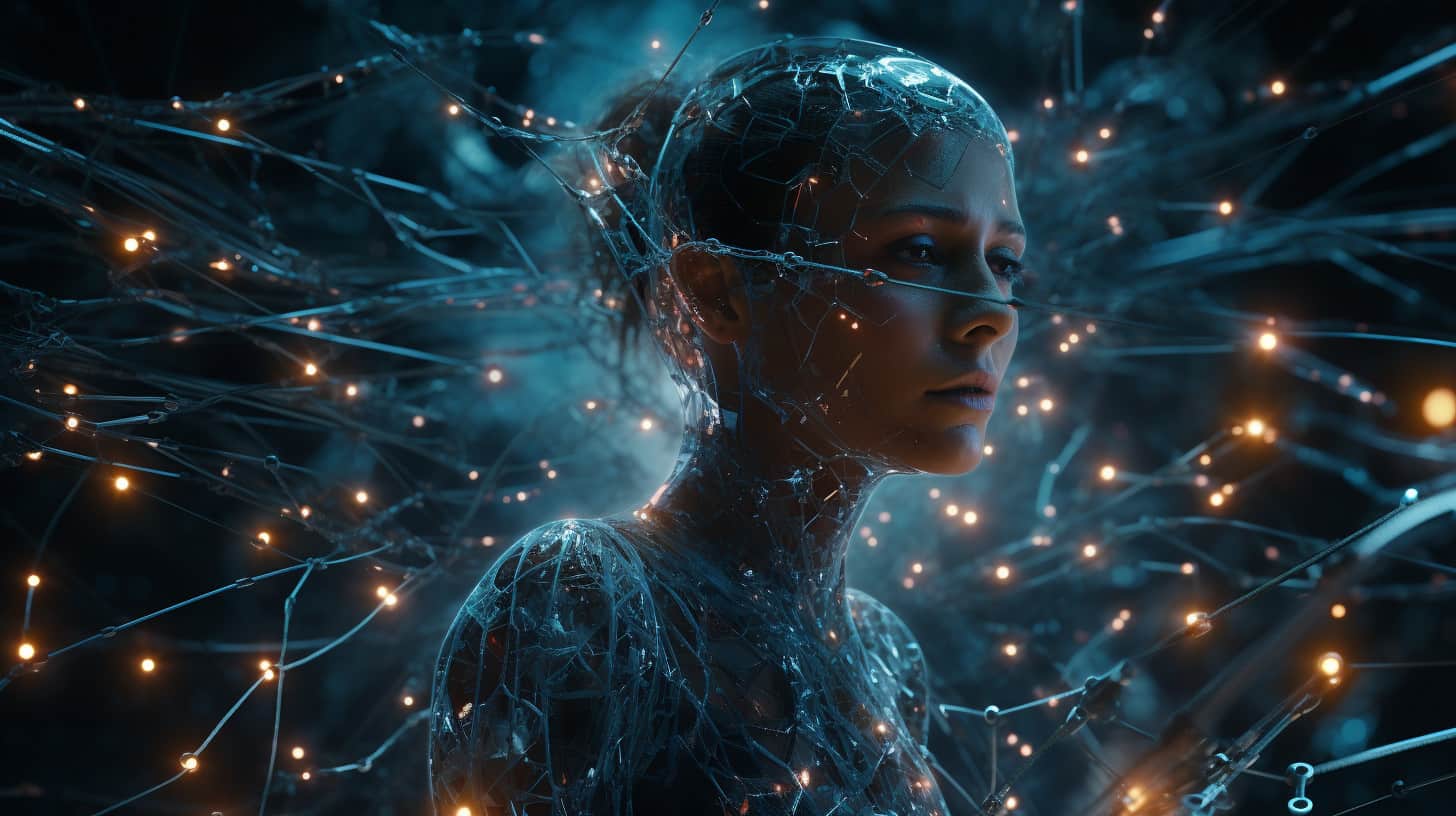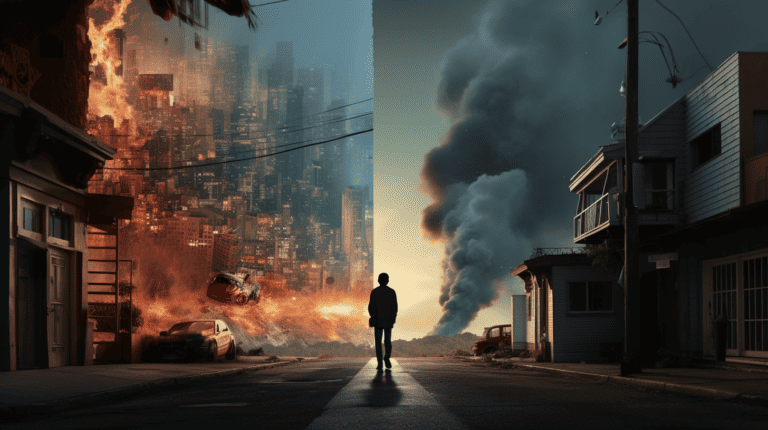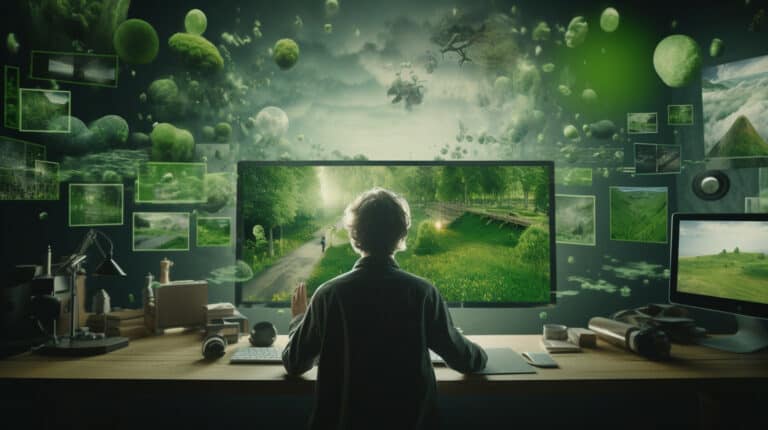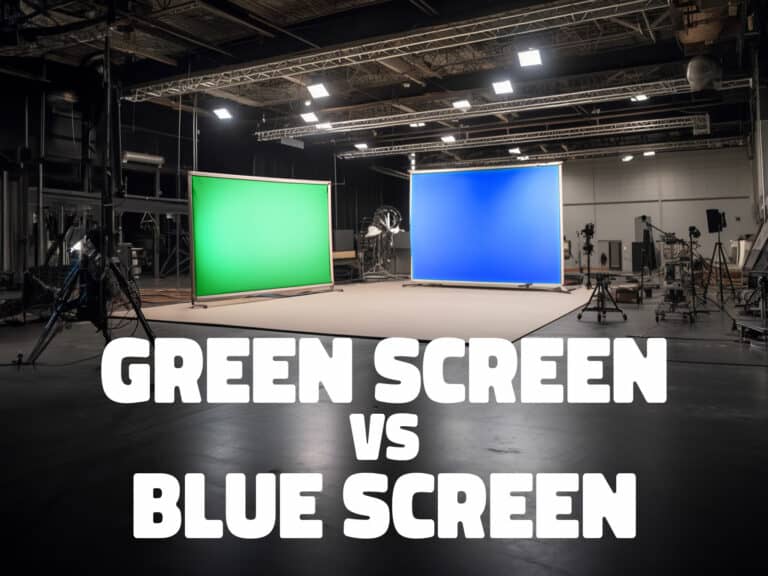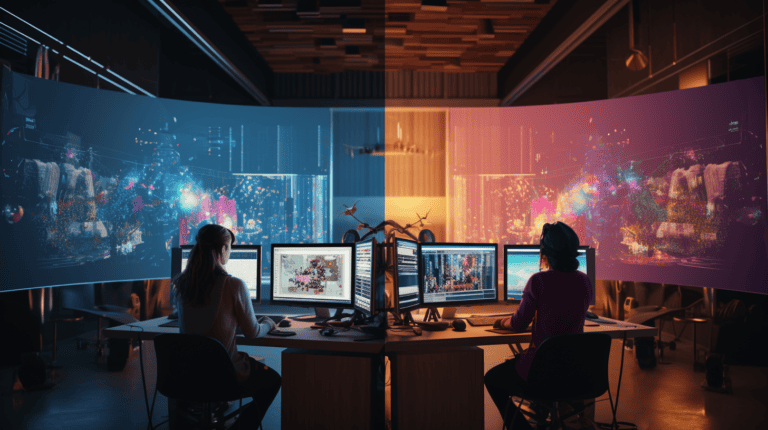What Is a Visual Effects Artist and What Do They Do?
Do you ever wonder how those mind-bending visual effects in movies and TV shows are created?
Well, let’s take a closer look at the world of visual effects artists. They’re the magicians behind the scenes, using their skills and creativity to bring imagination to life.
From creating realistic explosions to crafting fantastical creatures, visual effects artists play a crucial role in enhancing the visual storytelling experience.
So, buckle up and get ready to explore the fascinating world of visual effects artistry!
Key Points:
- Visual effects artists bring magic to the screen by enhancing and transforming the visual aspects of a production.
- They utilize cutting-edge technology and software to create visually stunning scenes in movies, TV shows, and video games.
- Technical expertise in software tools like Autodesk Maya and Adobe After Effects, as well as a strong understanding of lighting, shading, and physics, are essential for visual effects artists.
- They use various tools and software, such as CGI software, 3D modeling software, and compositing software, and require high-performance computers with powerful graphics cards.
Introduction to Visual Effects Artists
What is a Visual Effects Artist
To understand the role of a visual effects artist, it’s essential to delve into their definition and what they bring to the table.
So, what’s a visual effects artist? Simply put, they’re the magicians behind the mesmerizing special effects you see in movies, television shows, and even video games. They’re the ones who bring imagination to life, using their technical skills and creative flair to enhance and transform the visual aspects of a production.
But what does a visual effects artist do exactly? They can do a variety of things, from creating realistic creatures and environments to simulating explosions and other complex phenomena. Their expertise lies in seamlessly blending the real and the unreal, taking storytelling to new heights through their visual wizardry.
In short, visual effects artists can do wonders that transport audiences to magical worlds and leave them in awe.
Importance of Visual Effects in the Entertainment Industry
Visual effects artists play a crucial role in the entertainment industry by bringing captivating and immersive visual elements to life. Through their technical expertise and creative vision, they enhance the storytelling experience, making it more engaging and memorable for audiences. Visual effects have become an integral part of movies, TV shows, and even video games, allowing filmmakers and creators to stretch the boundaries of imagination and create stunning visual spectacles. From realistic explosions and breathtaking landscapes to fantastical creatures and mind-bending illusions, visual effects artists have the power to transport viewers to new worlds and evoke powerful emotions. They utilize cutting-edge technology and software to manipulate images, seamlessly blend live-action footage with computer-generated imagery (CGI), and create visually stunning scenes that leave a lasting impact on the audience.
| Visual Effects Artists | Entertainment Industry |
|---|---|
| – Bring visuals to life | – Enhance storytelling |
| – Utilize technology and software | – Stretch imagination |
| – Manipulate images | – Create stunning scenes |
| – Blend live-action footage with CGI | – Make lasting impact |
Skills and Qualifications of a Visual Effects Artist
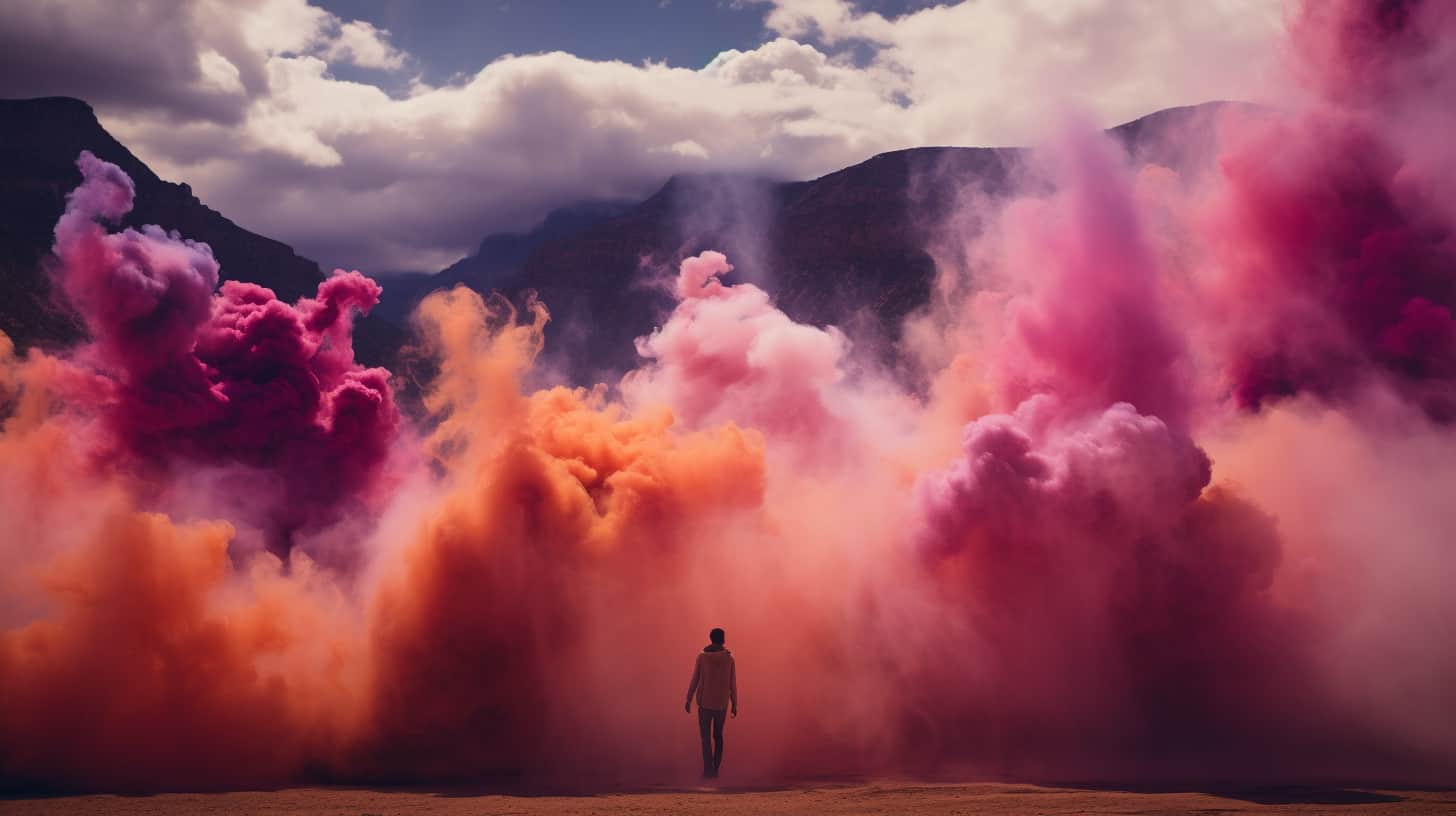
Are you ready to explore the skills and qualifications that make a visual effects artist stand out?
From technical expertise to creative skills, these artists possess a unique combination of talents. Whether it’s mastering complex software programs or having a keen eye for detail, their technical skills are essential in bringing visual effects to life.
Additionally, their creative abilities allow them to think outside the box and bring imagination to reality.
To acquire these skills, many visual effects artists undergo specialized education and training, equipping them with the knowledge to excel in this dynamic field.
Technical Skills Required for Visual Effects Artists
Developing a strong foundation of technical skills is essential for becoming a successful visual effects artist. In this field, you need to possess a wide range of technical abilities to bring your artistic vision to life.
Firstly, you must be proficient in computer graphics software such as Autodesk Maya, Adobe After Effects, and Nuke. These tools allow you to create and manipulate digital assets, add special effects, and seamlessly integrate them into live-action footage.
Additionally, a strong understanding of lighting, shading, and texturing is crucial to achieve realistic and visually stunning results. Familiarity with coding languages like Python and C++ is also beneficial for scripting and automating tasks.
Lastly, having a good grasp of physics and mathematics will help you simulate and render accurate physics-based effects.
Creative Skills Needed for Visual Effects Artists
To excel as a visual effects artist, you need to tap into your creativity and possess a diverse set of skills and qualifications. Creativity is the foundation of visual effects, as it allows you to think outside the box and bring imaginative ideas to life.
You must have a keen eye for detail and be able to envision how various elements will come together to create a seamless and visually stunning final product. Additionally, strong problem-solving skills are essential, as you may encounter technical challenges that require innovative solutions.
A deep understanding of color theory, composition, and storytelling is also crucial, as it helps you effectively convey emotions and narratives through your work. By honing these creative skills, you’ll be well-equipped to thrive as a visual effects artist.
Educational Background and Training for Visual Effects Artists
To develop the necessary skills and qualifications of a visual effects artist, you’ll need to pursue an educational background and training in the field.
While there’s no set educational path to becoming a visual effects artist, most professionals in the industry have a bachelor’s degree in a related field such as computer science, animation, or visual effects.
Additionally, many aspiring artists choose to attend specialized schools or programs that focus specifically on visual effects. These programs provide hands-on training and teach essential technical skills such as 3D modeling, texturing, lighting, and compositing.
It’s also important for visual effects artists to stay updated with the latest software and techniques used in the industry, as technology is constantly evolving.
Ultimately, a combination of formal education, practical training, and a passion for creativity will help you succeed in the field of visual effects.
Role of a Visual Effects Artist in Film and Television

As a visual effects artist, you have a crucial role in creating special effects that captivate audiences in movies and TV shows. You use your skills to enhance realism in visual storytelling, bringing fantastical worlds and extraordinary characters to life.
Collaborating closely with directors and producers, you play a vital part in turning their creative vision into a visually stunning reality.
Creating Special Effects for Movies and TV Shows
A visual effects artist plays a crucial role in creating special effects for movies and TV shows. They’re responsible for bringing fantastical creatures, epic explosions, and mind-bending environments to life on the screen. With their skills in computer-generated imagery (CGI), they can seamlessly integrate computer-generated elements into live-action footage, making the impossible seem real.
From transforming actors into superheroes with digital costumes to creating massive battle scenes with armies that exist only in the digital realm, visual effects artists push the boundaries of what’s visually possible. They use their technical expertise and artistic vision to enhance the storytelling and immerse audiences in the fictional worlds they create.
Enhancing Realism in Visual Storytelling
Enhancing realism in visual storytelling is a crucial role that visual effects artists play in creating immersive experiences for film and television audiences. By using their technical expertise and artistic skills, they bring fictional worlds to life and make them believable.
One way they achieve this is by seamlessly integrating computer-generated imagery (CGI) with live-action footage. Through their work, they are able to enhance the overall visual experience by creating realistic environments, adding fantastical creatures, or simulating natural phenomena.
Visual effects artists meticulously blend the real and the imaginary, ensuring that every detail aligns with the story being told. This attention to detail makes it difficult for the audience to discern what is real and what is not, further enhancing the sense of realism.
Collaborating with Directors and Producers
To collaborate effectively with directors and producers in film and television, you, as a visual effects artist, must possess strong communication skills and a keen understanding of the creative vision for the project.
As a vital member of the production team, you’ll work closely with the director and producer to bring their vision to life through visual effects. You’ll need to actively listen to their ideas and goals, and translate them into practical and achievable visual effects solutions.
Your ability to effectively convey technical information in a clear and concise manner will be crucial in ensuring that everyone is on the same page and working towards a common goal.
Applications of Visual Effects in Different Industries
Ready to explore the exciting applications of visual effects in different industries?
From advertising and marketing to video games and virtual reality, visual effects have become an essential tool for creating captivating experiences.
Imagine the possibilities of seamlessly blending reality and fantasy in advertisements, immersing yourself in a hyper-realistic gaming world, or stepping into a virtual reality environment that feels incredibly lifelike.
Visual effects artists are at the forefront of these industries, pushing boundaries and transforming the way we perceive and interact with the world around us.
Visual Effects in Advertising and Marketing
Visual effects artists play a crucial role in creating captivating visual elements for advertising and marketing campaigns across various industries. Here are three ways visual effects are used in advertising and marketing:
- Enhancing product visuals: Visual effects can bring products to life by adding realistic textures, lighting, and movements. Whether it’s showcasing the intricate details of a car or making food look mouth-watering, visual effects help create a strong visual impact on consumers.
- Creating immersive experiences: Brands are using visual effects to transport audiences into different worlds, whether it’s through virtual reality or augmented reality. By creating engaging and interactive experiences, visual effects help brands connect with their target audience on a deeper level.
- Telling compelling stories: Visual effects can help convey complex messages and emotions in a visually stunning way. Whether it’s through animated characters or dynamic environments, visual effects enable brands to tell stories that resonate with their audience and leave a lasting impression.
With the rise of technology and consumer expectations, visual effects in advertising and marketing have become essential tools for brands to stand out and engage their audience.
Now, let’s explore how visual effects are used in the world of video games.
Visual Effects in Video Games
As you continue exploring the world of visual effects in advertising and marketing, let’s now delve into the applications of visual effects in different industries, starting with their role in video games.
Visual effects in video games have revolutionized the gaming experience, allowing players to immerse themselves in stunning and realistic virtual worlds. From lifelike character animations to breathtaking landscapes, visual effects bring games to life, creating a sense of awe and wonder.
Whether it’s the explosive special effects in action-packed games or the intricate details in fantasy realms, visual effects enhance the gameplay and make it more engaging and captivating. With advancements in technology, video games continue to push boundaries and deliver truly cinematic experiences.
Now, let’s explore the exciting world of visual effects in virtual reality and augmented reality.
Visual Effects in Virtual Reality and Augmented Reality
In the world of virtual reality and augmented reality, visual effects artists play a crucial role in creating immersive and interactive experiences. These cutting-edge technologies have revolutionized various industries, and visual effects have become integral to their success.
Here are three applications of visual effects in virtual reality and augmented reality:
- Gaming: Visual effects artists bring virtual worlds to life by creating realistic and stunning graphics, enhancing the overall gaming experience. From lifelike characters and environments to spectacular special effects, visual effects add depth and realism to virtual reality and augmented reality games.
- Education and Training: Visual effects in virtual reality and augmented reality have transformed the way we learn and train. By incorporating interactive visual elements, virtual reality and augmented reality simulations offer immersive educational experiences, allowing users to explore complex concepts and environments in a safe and controlled setting.
- Marketing and Advertising: Visual effects artists leverage virtual reality and augmented reality to captivate audiences and create memorable brand experiences. By integrating visual effects into marketing campaigns, companies can showcase products in innovative ways, enabling consumers to interact with virtual objects and environments, ultimately driving engagement and brand loyalty.
The applications of visual effects in virtual reality and augmented reality are vast and continue to expand as these technologies advance. Visual effects artists are at the forefront of shaping these immersive experiences, pushing the boundaries of what’s possible in the virtual world.
Tools and Software Used by Visual Effects Artists

Are you curious about the tools and software that visual effects artists use to bring their creative visions to life? Well, you’re in luck! In this section, we’ll give you an overview of the commonly used software in visual effects, as well as the hardware and equipment that these artists rely on.
From industry-standard software like Autodesk Maya and Adobe After Effects to powerful hardware like high-end graphics cards and specialized motion capture systems, visual effects artists have an impressive arsenal at their disposal.
Overview of Commonly Used Software in Visual Effects
To become a visual effects artist, you need to familiarize yourself with a wide range of tools and software used by visual effects artists. Here are three commonly used software that you should know:
- Adobe After Effects: This industry-standard software allows you to create stunning visual effects and motion graphics. With its extensive range of features and intuitive interface, you can bring your creative visions to life.
- Autodesk Maya: Widely used in the film and gaming industry, Maya is a powerful 3D animation software. It enables you to model, texture, animate, and render realistic 3D environments and characters.
- Nuke: Nuke is a node-based compositing software that’s highly regarded in the visual effects industry. It allows you to seamlessly integrate different elements, such as live-action footage, 3D renders, and special effects, to create a cohesive and visually stunning final product.
By mastering these software tools, you’ll be well-equipped to create awe-inspiring visual effects.
Now, let’s delve into the hardware and equipment that are essential for visual effects artists.
Hardware and Equipment for Visual Effects Artists
Now let’s explore the essential hardware and equipment that you, as a visual effects artist, use to bring your creative visions to life.
Your most important tool is a high-performance computer with a powerful graphics card and plenty of RAM. This allows you to handle the complex calculations and renderings required for visual effects work.
You’ll also need a high-resolution monitor to accurately view and edit your work.
In addition to your computer setup, you’ll require specialized software such as 3D modeling and animation programs, compositing software, and video editing tools.
These software applications enable you to create realistic visual effects, seamlessly integrate computer-generated imagery with live-action footage, and add the finishing touches to your projects.
With the right hardware and software, you’ll have the tools to transform your imagination into stunning visual experiences.
Challenges Faced by Visual Effects Artists
As a visual effects artist, you’re constantly faced with the challenge of meeting tight deadlines and managing a heavy workload. The pressure to deliver high-quality work within a limited timeframe can be overwhelming.
Additionally, you must stay up-to-date with evolving technology to ensure your skills remain relevant and competitive. This means constantly learning new software and techniques to keep pace with industry advancements.
Furthermore, you must find a delicate balance between your own artistic creativity and the expectations of your clients, who often have specific visions and requirements for their projects.
Meeting these challenges requires resilience, adaptability, and a strong commitment to your craft.
Meeting Tight Deadlines and Managing Workload
Managing tight deadlines and workload is a constant challenge for visual effects artists. As a visual effects artist, you’re often faced with the pressure of meeting strict deadlines while juggling multiple projects simultaneously. Here are three key challenges you may encounter in this aspect of your work:
- Time management: With tight deadlines, it’s crucial to effectively manage your time. You need to prioritize tasks, set realistic goals, and allocate your resources wisely to ensure timely delivery.
- Workload balance: As a visual effects artist, you may find yourself working on multiple projects at once. Balancing your workload can be tricky, as you need to allocate your time and energy efficiently to meet the demands of each project without compromising quality.
- Stress management: Meeting tight deadlines can induce stress and pressure. It’s essential to develop effective stress management techniques to stay focused, motivated, and maintain your creative edge.
Staying Up-to-Date with Evolving Technology
To stay current with evolving technology, you must continuously adapt and learn new techniques and software. Visual effects artists face the constant challenge of keeping up with the latest advancements in their field.
As technology continues to evolve at a rapid pace, there’s always something new to learn and master. Whether it’s new software programs, updated rendering techniques, or advancements in virtual reality, staying up-to-date is crucial to remain competitive in the industry.
This requires a commitment to lifelong learning and a willingness to embrace change. It can be daunting at times, but it’s also exciting to be at the forefront of technological innovation.
Balancing Creativity and Client Expectations
To maintain a successful career as a visual effects artist, it’s essential to balance your creativity with the expectations of your clients. While your artistic vision and creativity are what make your work unique and captivating, you must also consider the desires and goals of your clients.
Here are three key challenges you may face in balancing creativity and client expectations:
- Finding the right balance: Striking a balance between pushing the boundaries of creativity and meeting the practical needs of your clients can be a delicate task. It requires understanding their vision and objectives while infusing your artistic flair.
- Managing client expectations: Clients often come with specific expectations and ideas of what they want. It’s your responsibility to manage these expectations, ensuring that you deliver a final product that not only meets their vision but also exceeds their expectations.
- Navigating feedback and revisions: Collaboration is a crucial part of the creative process, and feedback from clients is inevitable. It’s vital to approach feedback with an open mind and be willing to make revisions without compromising your artistic integrity.
Career Opportunities for Visual Effects Artists
Are you interested in working behind-the-scenes in the film and television industry?
As a visual effects artist, you have the opportunity to bring imagination to life and create stunning visual effects that captivate audiences.
Not only can you work in film and television studios, but you also have the flexibility to freelance and collaborate with different projects.
Additionally, there are exciting career prospects in the advertising and gaming industries, where your skills as a visual effects artist can make a significant impact.
Working in Film and Television Studios
Film and television studios offer a multitude of career opportunities for visual effects artists. Working in these studios allows you to bring your creative vision to life and contribute to the magic of the big screen. Here are three exciting career paths you can pursue in film and television studios:
- Visual Effects Supervisor: As a visual effects supervisor, you’ll oversee the entire visual effects process, from pre-production to post-production. You’ll collaborate with directors and producers to develop and execute the creative vision for the project.
- Compositor: As a compositor, you’ll be responsible for combining various elements, such as computer-generated imagery (CGI), live-action footage, and special effects, to create seamless and realistic final shots. Your attention to detail and artistic eye will be crucial in achieving the desired visual effects.
- 3D Modeler: As a 3D modeler, you’ll create digital models of characters, props, and environments using specialized software. Your models will serve as the foundation for the visual effects in the film or television production, adding depth and realism to the final product.
Working in film and television studios as a visual effects artist opens up a world of possibilities to showcase your talent and contribute to the magic of storytelling on the screen.
Freelancing as a Visual Effects Artist
As a visual effects artist, you can explore career opportunities by freelancing in the industry. Freelancing offers you the freedom to choose the projects you want to work on, the clients you want to collaborate with, and the flexibility to work from anywhere in the world.
In the dynamic world of visual effects, freelancing allows you to constantly challenge yourself with new projects and expand your skill set. From working on blockbuster films to creating stunning visuals for commercials or video games, the possibilities are endless.
Not only does freelancing give you the chance to showcase your creativity and technical expertise, but it also allows you to build a diverse portfolio that can attract potential clients and open doors to new and exciting opportunities.
Opportunities in Advertising and Gaming Industries
To maximize your career as a visual effects artist, explore the abundant opportunities in the advertising and gaming industries. These industries are constantly evolving and demanding high-quality visual effects to create immersive experiences for their audiences.
Here are three exciting career opportunities for visual effects artists in advertising and gaming:
- Advertising Campaigns: With the rise of digital advertising, companies are seeking visual effects artists to create eye-catching and memorable ads. From creating realistic product renderings to designing captivating animations, your skills as a visual effects artist can help bring advertisements to life and make a lasting impact.
- Game Development: Visual effects play a crucial role in gaming, enhancing the overall experience and creating stunning visuals. As a visual effects artist, you can contribute to the development of characters, environments, and special effects that make games visually engaging and immersive.
- Virtual Reality and Augmented Reality: These emerging technologies are revolutionizing the way we experience digital content. Visual effects artists are in high demand to create realistic and interactive virtual and augmented reality experiences, whether it’s for gaming, advertising, or other industries.
Salary and Job Outlook for Visual Effects Artists
Curious about the earning potential and future prospects as a visual effects artist? Well, you’re in luck! Let’s take a quick look at the average salary range and job outlook in this exciting industry.
From competitive salaries to a growing demand for skilled professionals, the world of visual effects offers a promising career path for those with a passion for creating stunning visuals.
Average Salary Range for Visual Effects Artists
If you’re wondering about the average salary range for visual effects artists and the job outlook in this field, you’ll find that it can vary depending on a number of factors. Here are three key points to consider:
- Experience: Like in any profession, the more experience you have, the higher your earning potential. As a visual effects artist, gaining experience through internships or entry-level positions can help you climb the salary ladder.
- Location: Where you work can greatly impact your salary. Major cities with a strong film and television industry, such as Los Angeles or Vancouver, tend to offer higher salaries compared to smaller cities or towns.
- Specialization: Visual effects artists can specialize in various areas, such as character animation, compositing, or motion graphics. Specializing in a high-demand niche can lead to more job opportunities and potentially higher pay.
Job Growth and Demand in the Visual Effects Industry
As a visual effects artist, you can expect to see a growing job market and increasing demand for your skills in the visual effects industry. With advancements in technology and the ever-expanding entertainment industry, the need for visual effects has skyrocketed.
From movies and television shows to video games and virtual reality experiences, visual effects are now a crucial component of storytelling and immersive entertainment. As a result, the demand for talented visual effects artists who can create stunning and realistic effects is on the rise.
This means that you’ll have ample opportunities to showcase your skills and contribute to the creation of visually spectacular experiences.
Now, let’s explore the world of famous visual effects artists and their contributions to the industry.
Famous Visual Effects Artists and Their Contributions
Do you ever wonder who the pioneers in the field of visual effects are? Or perhaps you’re curious about the contemporary visual effects artists who are making a significant impact in the industry today.
In this section, we’ll explore the famous visual effects artists and their groundbreaking contributions that have shaped the world of film and brought our wildest imaginations to life on the big screen.
From the visionaries of the past to the innovators of the present, these artists have left an indelible mark on the art of visual effects.
Pioneers in the Field of Visual Effects
One of the most influential pioneers in the field of visual effects is John Dykstra, who revolutionized the industry with his groundbreaking contributions.
Dykstra’s most notable work was on the film ‘Star Wars: Episode IV – A New Hope’ where he developed the Dykstraflex camera system, which allowed for precise and realistic camera movements within a visual effects shot. This innovation set the stage for future advancements in the field.
Another significant contribution by Dykstra was the creation of the Industrial Light & Magic (ILM) division at Lucasfilm. Under his leadership, ILM became a powerhouse in the visual effects industry, pushing the boundaries of what was possible on screen.
Dykstra’s work laid the foundation for modern visual effects, inspiring countless artists to push the boundaries of their craft and continually innovate.
With these pioneers leading the way, contemporary visual effects artists are making an even greater impact, building upon the legacy of those who came before them.
Contemporary Visual Effects Artists Making an Impact
Contemporary visual effects artists are revolutionizing the industry with their groundbreaking contributions and innovative techniques. These skilled individuals have made a significant impact on the world of visual effects, pushing the boundaries of what is possible and creating awe-inspiring visuals that captivate audiences worldwide. Let’s take a look at some famous visual effects artists and their notable contributions:
| Artist | Contribution | Film |
|---|---|---|
| John Knoll | Co-creator of Photoshop, groundbreaking work on Jurassic Park | Star Wars, Pirates of the Caribbean |
| Dennis Muren | Pioneered the use of computer-generated imagery (CGI) | E.T. the Extra-Terrestrial, Jurassic Park |
| Joe Letteri | Developed advanced motion-capture techniques | Avatar, The Lord of the Rings |
These artists, along with many others, have played a pivotal role in shaping the visual effects industry. Their talent and creativity continue to push the boundaries of what is possible, inspiring future generations of visual effects artists to create even more breathtaking visuals.
Conclusion
So, you’ve learned about the role and importance of visual effects artists, as well as some of the famous artists who’ve made significant contributions to the field.
But what does the future hold for visual effects? Well, as technology continues to advance at a rapid pace, we can expect to see even more innovative and realistic effects in movies, TV shows, and video games.
From virtual reality to augmented reality, visual effects artists will undoubtedly play a crucial role in shaping the entertainment industry of tomorrow.
Recap of the Role and Importance of Visual Effects Artists
To fully grasp the significance of visual effects artists, it’s essential to recognize the integral role they play in bringing imagination to life through the use of cutting-edge technology. These talented individuals possess a unique set of skills that allow them to create stunning visual effects that captivate audiences worldwide.
Here is a recap of the role and importance of visual effects artists:
- Enhancing storytelling: Visual effects artists have the power to enhance the storytelling process by creating awe-inspiring visuals that transport viewers to new and exciting worlds. They work closely with directors and cinematographers to bring the director’s vision to life.
- Creating realism: Visual effects artists have the ability to seamlessly blend real and imaginary elements, creating a sense of realism that would otherwise be impossible to achieve. From lifelike creatures to breathtaking landscapes, they can make the impossible seem real.
- Pushing the boundaries of technology: Visual effects artists are constantly pushing the boundaries of technology, exploring new techniques and tools to create groundbreaking effects. They’re at the forefront of innovation, driving the industry forward and inspiring future generations of artists.
Future Trends and Innovations in Visual Effects
As we delve into the future trends and innovations in visual effects, it’s important to consider the ever-evolving landscape of this dynamic field. With advancements in technology and the constant push for more realistic and immersive experiences, visual effects artists are constantly challenged to stay ahead of the curve.
One of the future trends we can expect to see is the integration of artificial intelligence (AI) in the creation of visual effects. AI can help automate certain tasks, such as rotoscoping or tracking, allowing artists to focus on more creative aspects of their work.
Another exciting innovation is the use of virtual reality (VR) and augmented reality (AR) in visual effects, creating entirely new ways for audiences to engage with the content.
These emerging trends and technologies promise to revolutionize the visual effects industry and open up new possibilities for artists to push the boundaries of their craft.
Frequently Asked Questions
How Long Does It Typically Take to Become a Visual Effects Artist?
It typically takes several years to become a visual effects artist. However, with dedication, hard work, and continuous learning, you can fast-track your journey and become a skilled professional in a shorter time.
What Is the Difference Between a Visual Effects Artist and a Special Effects Artist?
The difference between a visual effects artist and a special effects artist lies in their tools. While a visual effects artist uses computer-generated imagery, a special effects artist creates physical effects on set.
Can Visual Effects Be Used in Live Theater Productions?
Yes, visual effects can be used in live theater productions. They can enhance the storytelling, create magical moments, and transport the audience to different worlds. The possibilities are endless when it comes to using VFX in theater.
Are There Any Ethical Considerations That Visual Effects Artists Need to Take Into Account?
When it comes to being a visual effects artist, ethical considerations are crucial. From representing diverse perspectives to avoiding harmful stereotypes, you have the power to shape narratives responsibly and create a positive impact.
What Are Some Emerging Trends or Advancements in Visual Effects Technology?
If you want to stay ahead in the world of visual effects, it’s important to keep up with the latest trends and advancements. So, what are some emerging technologies shaping the future of VFX?

